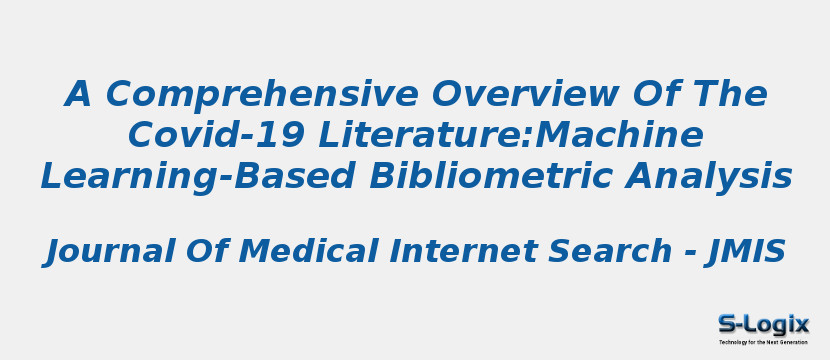Research Area: Machine Learning
Background:
Shortly after the emergence of COVID-19, researchers rapidly mobilized to study numerous aspects of the disease such as its evolution, clinical manifestations, effects, treatments, and vaccinations. This led to a rapid increase in the number of COVID-19–related publications. Identifying trends and areas of interest using traditional review methods (eg, scoping and systematic reviews) for such a large domain area is challenging.
Objective:
We aimed to conduct an extensive bibliometric analysis to provide a comprehensive overview of the COVID-19 literature.
Methods:
We used the COVID-19 Open Research Dataset (CORD-19) that consists of a large number of research articles related to all coronaviruses. We used a machine learning–based method to analyze the most relevant COVID-19–related articles and extracted the most prominent topics. Specifically, we used a clustering algorithm to group published articles based on the similarity of their abstracts to identify research hotspots and current research directions. We have made our software accessible to the community via GitHub.
Results:
Of the 196,630 publications retrieved from the database, we included 28,904 in our analysis. The mean number of weekly publications was 990 (SD 789.3). The country that published the highest number of COVID-19–related articles was China (2950/17,270, 17.08%). The highest number of articles were published in bioRxiv. Lei Liu affiliated with the Southern University of Science and Technology in China published the highest number of articles (n=46). Based on titles and abstracts alone, we were able to identify 1515 surveys, 733 systematic reviews, 512 cohort studies, 480 meta-analyses, and 362 randomized control trials. We identified 19 different topics covered among the publications reviewed. The most dominant topic was public health response, followed by clinical care practices during the COVID-19 pandemic, clinical characteristics and risk factors, and epidemic models for its spread.
Conclusions:
We provide an overview of the COVID-19 literature and have identified current hotspots and research directions. Our findings can be useful for the research community to help prioritize research needs and recognize leading COVID-19 researchers, institutes, countries, and publishers. Our study shows that an AI-based bibliometric analysis has the potential to rapidly explore a large corpus of academic publications during a public health crisis. We believe that this work can be used to analyze other eHealth-related literature to help clinicians, administrators, and policy makers to obtain a holistic view of the literature and be able to categorize different topics of the existing research for further analyses. It can be further scaled (for instance, in time) to clinical summary documentation. Publishers should avoid noise in the data by developing a way to trace the evolution of individual publications and unique authors.
Keywords:
Covid-19
Machine Learning
Bibliometric Analysis
Deep Learning
Author(s) Name: Alaa Abd-Alrazaq, Jens Schneider, Borbala Mifsud,Tanvir Alam, Mowafa Househ, Mounir Hamdi and Zubair Shah
Journal name: Journal of Medical Internet Research
Conferrence name:
Publisher name: PubMed
DOI: 10.2196/23703
Volume Information: Volume 23, Issue 3
